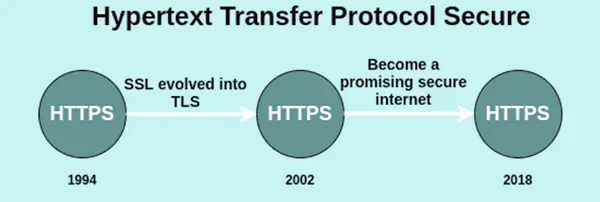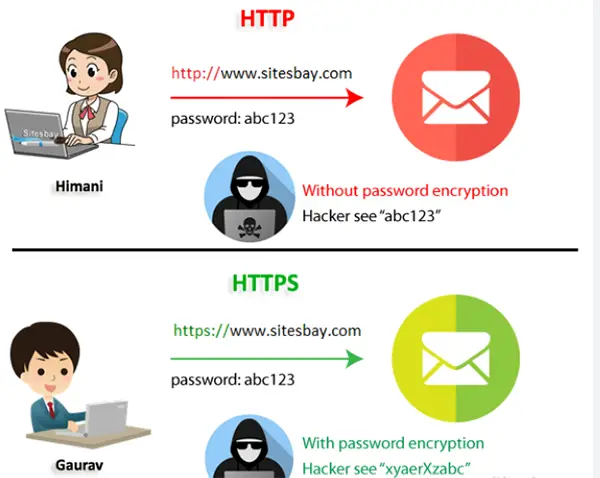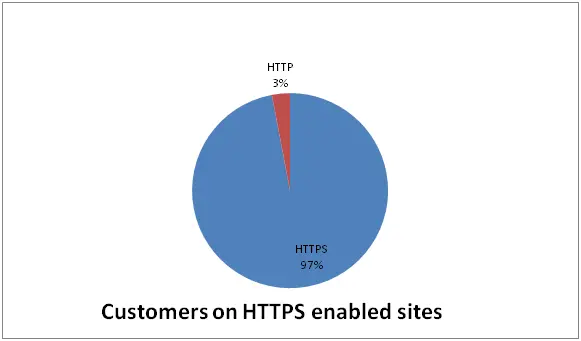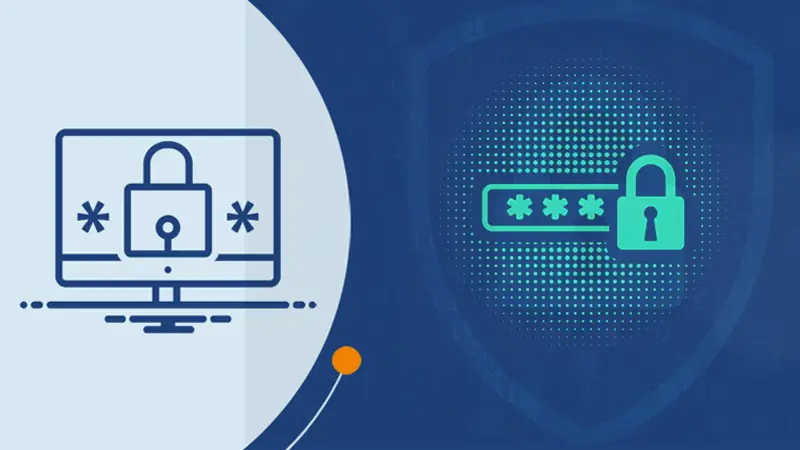HTTPS vs. HTTP: What’s the Difference?
Key Takeaway
- HTTP and HTTPS are acronyms with HTTPS being the more secure sibling.
- The secure sibling ensures data integrity, authentication, and security with the help of SSL/TLS encryption.
- The transition from HTTP to HTTPS consists of acquiring an SSL certificate, installation, updating internal links, and monitoring for maintenance.
- The difference between them lies in the guarded fortress and vulnerability in the digital landscape.
Surfing the ‘net today, the internet is intertwined with daily life. Folks hop online for oodles – from snagging that latest deal, catching up on the buzz, to tweeting. Ever eyed that ‘HTTP’ or ‘HTTPS’ prefixing a site’s address?
Seems trifling, that little detail Mega vital for cyber smarts.
HTTP stands for Hypertext transfer protocol and is specially coded in a language called HTML. In simple terms, it is basically a set of instructions for transferring data from one computer to another.
Any type of information including text, images, etc. can be shared as long as both systems are compatible.
On the other hand, HTTPS stands for Hypertext Transfer Protocol Secure. This is more secure as it is authorized by Secure Socket Layer (SSL). For instance, if the URL has HTTP, then the website is not safe.

Peeling Back Layers
HTTP? Think of it as the alphabet of online chit-chat. Then there’s HTTPS. It’s HTTP’s savvy sibling. Their gig? Dictating the jive of data on the worldwide dance floor, linking your digital window to the world’s sites smoothly.
But, hold up. Before we wade deeper, let’s size up the shadowy alleyways online. They’ve got some ick.
Being online requires caution, especially when visiting unsecured websites. Venturing onto these sites can leave one vulnerable to an array of hazards, from potential data breaches to malicious software.
With that backdrop, it’s time to delve into the differences and importance of HTTP and HTTPS.
The Core Differences Between HTTP and HTTPS

Data Integrity:
HTTPS guarantees that the data you receive hasn’t been altered during transmission. This ensures that when you download files or receive information, it’s exactly as the website intended, without any foreign interference.
Authentication:
HTTPS ensures that you’re communicating with the intended website. This prevents “man-in-the-middle” attacks, where a hacker positions themselves between the user and the website to impersonate the site and gather personal information.
Security:
HTTP: Picture this: you chatter, and it’s like whispering secrets in a bustling café. Anyone’s ears could catch it. But, swap that out. Enter HTTPS. It’s got an ace up its sleeve – the nifty SSL or even its slick bro, TLS. Their job?
Guarding your whispers. They make sure those sneaky folks looking to snatch or twist words They’re in for a tough game.
Why Does HTTPS Matter?
In an age of increasing cyber threats, the importance of HTTPS is paramount. For data scientists and website operators, it goes beyond safeguarding user information; it’s about establishing credibility and trust with your audience.
When users see the green padlock symbol in their URL bar, they immediately trust the credibility of the site.
Moreover, search engines like Google have started to prioritize HTTPS websites in their ranking algorithms. Hence, migrating to HTTPS is also beneficial from an SEO perspective.
According to a survey, 97% of the customers put out their personal information such as credit card details on websites with HTTPS while 3% use the sites that are not equipped with it.

The Evolution of HTTPS
As the digital landscape expanded, cyber-attacks have become more advanced and intricate. In response to this growing menace, leading web browsers such as Chrome and Firefox started labeling HTTP sites as “Not Secure.”
This seemingly minor shift profoundly influenced many to adopt HTTPS, with websites of all scales transitioning to this more secure protocol to retain their users’ confidence.
Moreover, entities like “Let’s Encrypt” have made notable contributions by offering complimentary SSL/TLS certificates, further facilitating the shift towards a safer web.
This democratized access to HTTPS, allowing even small website owners to afford the pivotal security layer.
Do You Know?
Tim Berners-Lee and his team invented HTTP between 1989 and 1991.
Making the Switch from HTTP to HTTPS
For those who are still on HTTP, transitioning to HTTPS is more straightforward than it seems:
Acquire an SSL Certificate:
You can obtain it from a Certificate Authority (CA). Some hosting providers also offer them as part of their packages.
Install and Activate the Certificate:
After obtaining the certificate, it’s vital to set it up on your server. The installation procedure might differ based on your hosting platform and the kind of server you use.
Update Your Website:
Ensure all your internal links, plugins, and third-party tools are compatible with HTTPS.
Force HTTPS:
Set up 301 redirects to ensure that users and search engines are directed to the HTTPS version of your site, even if they type in the HTTP version.
Monitor and Maintain:
Regularly check your SSL certificate’s status and renew it before it expires.
Do You Know?
The major change happened in 1994 when Netscape Communications built an additional encrypted layer of protection on top of SSL.
The Future of HTTP and HTTPS
HTTPS: It’s climbing up fast. But the ‘net, it’s like quicksilver, always shape-shifting. Next in line are HTTP/3 and QUIC. Buzzing in, hinting at slicker, safer surfs.
Almost 95% of the websites on Google use HTTPS.
But here’s the Catch: with all the fancy tech jazz, the old golds like security, cyber protection, and trust are non-negotiable. Looking ahead, it’s clear: That’s the top bill, always, in web wizardry.
In the End
The difference between HTTP and HTTPS may seem like a single ‘S’, but it signifies much more. It’s the difference between a guarded fortress and an open field.
In an age of growing cyber threats and increasing digital dependencies, understanding and advocating for online safety has never been more vital.
So, the next time you navigate the digital realm, pay attention to that URL bar. And remember, every ‘S’ counts.
Why Media Professionals are Turning to Self-Storage Solutions?
FreeVINCheck Review: Top-rated Site for Free VIN Check…
VinCheckFree Review: Run a Free VIN Check Instantly…
How do Options Derivatives Work, Their Features, And…
All About Car Accidents Lawyers
Best Five Password Managers to Save, Manage and Protect…
The Top 5 Benefits of Having a Home…
Using IP Authorization for Safer Proxy Connection
Home Security Systems: 5 Common Problems and How…
Why It Is Important to Check a Used…
Getting a Personal Injury Lawyer in the UK












